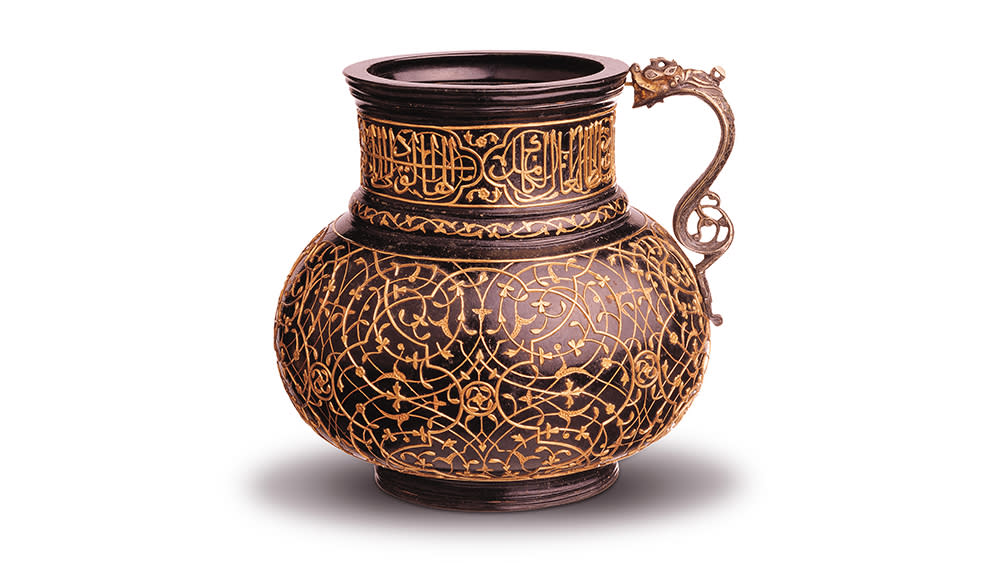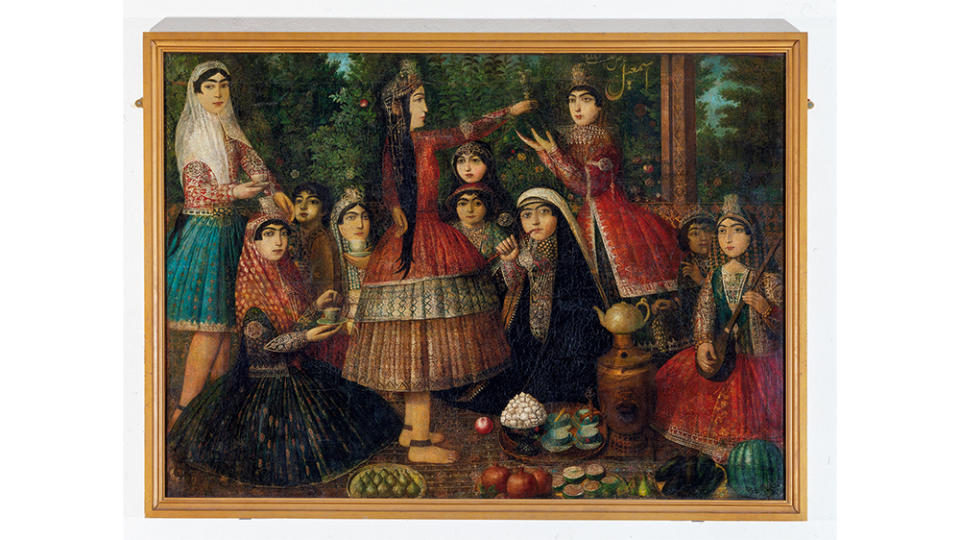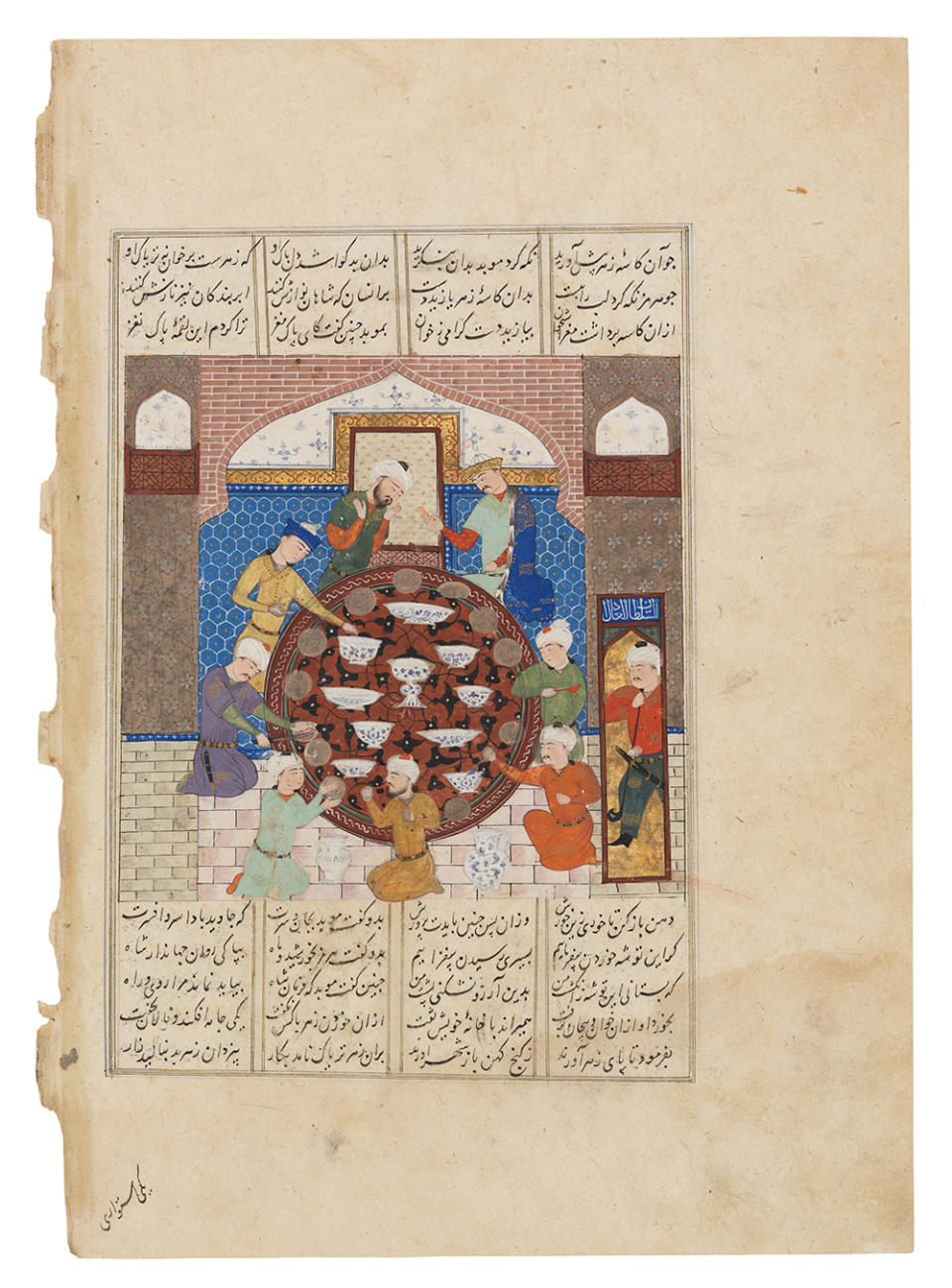A New Show in L.A. Will Explore the Combination of Art and Fine Dining in the Islamic World

From birthday cakes to Thanksgiving turkeys to Fourth of July barbecues, food and its attendant rituals bring friends and family together in a way nothing else can. The universality of that tradition will be on display in a new show at the Los Angeles County Museum of Art, Dining With the Sultan: The Fine Art of Feasting, which examines Islamic art through a culinary lens.
“It’s a food-oriented culture,” says Linda Komaroff, LACMA’s curator and department head for art of the Middle East and a specialist in Islamic work, who organized the show, which runs from December 17 to August 4 and then travels to the Detroit Institute of Arts. “So many tablewares were produced, and they survived in enormous quantities.”
More from Robb Report
How Artist Annie Morris Brings Her Whimsical Sculptures and Drawings to Life
New York Authorities Return $19 Million Worth of Looted Antiquities to Italy
Leonardo da Vinci Used a Rare Chemical Compound When He Painted the 'Mona Lisa,' Scientists Say
As the invocation of sultans suggests, this is an exploration of the highest-end items, made for the palaces of the privileged. The 250 objects and artworks—dating from the 8th to the 19th centuries—come from LACMA’s collection as well as from institutions around the world; the show also features a contemporary commissioned work, an animated multimedia installation by Sadik Kwaish Alfraji, A Thread of Light Between My Mother’s Fingers and Heaven.

The ruling elites in far-flung societies ate well, indeed—just look at the Indian food container encrusted in gold, emeralds, and rubies from the late 17th century or the delicately molded green glassware from Iran dating back a thousand years. A Turkish tavern scene from the 18th century rendered in an illuminated manuscript has a palpable bonhomie, and an entire reception room from 18th-century Damascus is being installed, too, with cornices that depict the baklava that was almost certainly served to guests.
Komaroff has been making it her mission to expose viewers to the beauties of her field, as with her 2011-12 predecessor show, Gifts of the Sultan: The Arts of Giving at the Islamic Courts. Her latest magnum opus came out of her own blind spots. She knew about the techniques, materials, and other facets of the objects in her care, but not the anthropological details. “We know it’s a bottle, but for what?” says Komaroff. “What goes in this beautifully decorated bowl, which we now only see when it’s empty? It made me curious.”
A blue-and-white bowl from 17th-century Iran, for example, has an inscription from Persian poetry comparing the yellow hue of muzaffar (a sweetish rice-and-saffron preparation) to a sunset; research now has convinced Komaroff that the vessel was likely used for serving the dish itself.

The show’s catalog has an unusually playful structure for a scholarly publication: It’s organized in sections called Courses, beginning with Starters. It even contains recipes, in case you feel like making a chickpea broth once served in 10th-century Baghdad or a chicken-filled pastry from the Ottoman Empire circa 1865.
Whether or not your own banquet table features beautifully decorated communal bowls—as was typical at a sultan’s feasts—Komaroff is confident the topic has a good chance of being relevant and inviting for everyone. “For most people, the exposure to a new culture is through food,” she says.
Perhaps most convincingly, the exhibition has had a particular effect on its own creator, who is not much of a kitchen denizen herself. “I’m not really a big food person,” Komaroff admits. “But everything in this exhibition makes me hungry.”
Best of Robb Report
Sign up for Robb Report's Newsletter. For the latest news, follow us on Facebook, Twitter, and Instagram.


